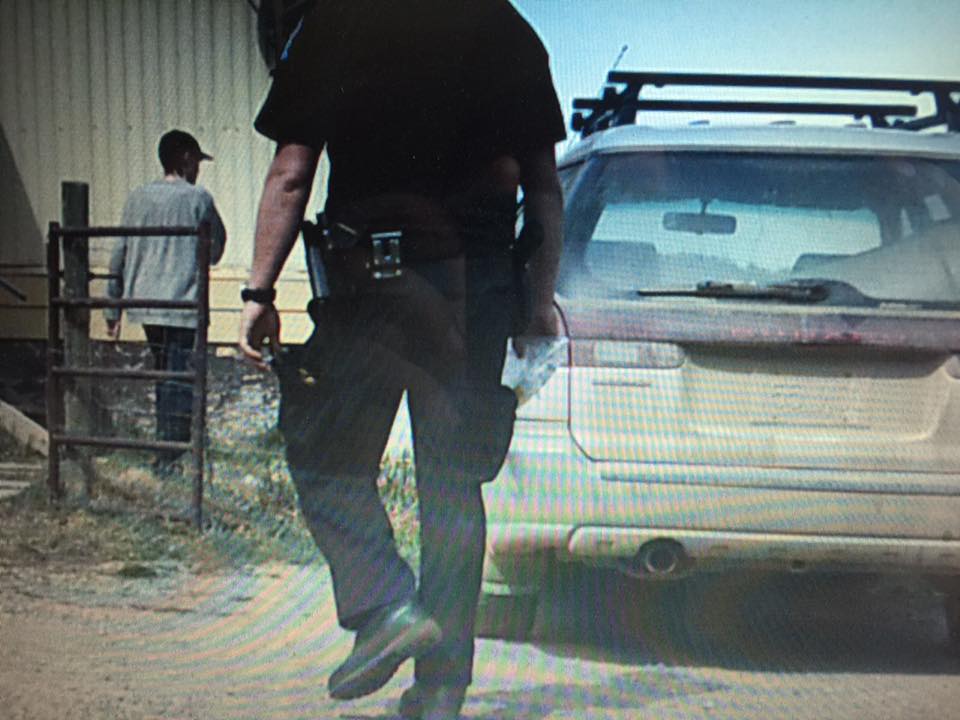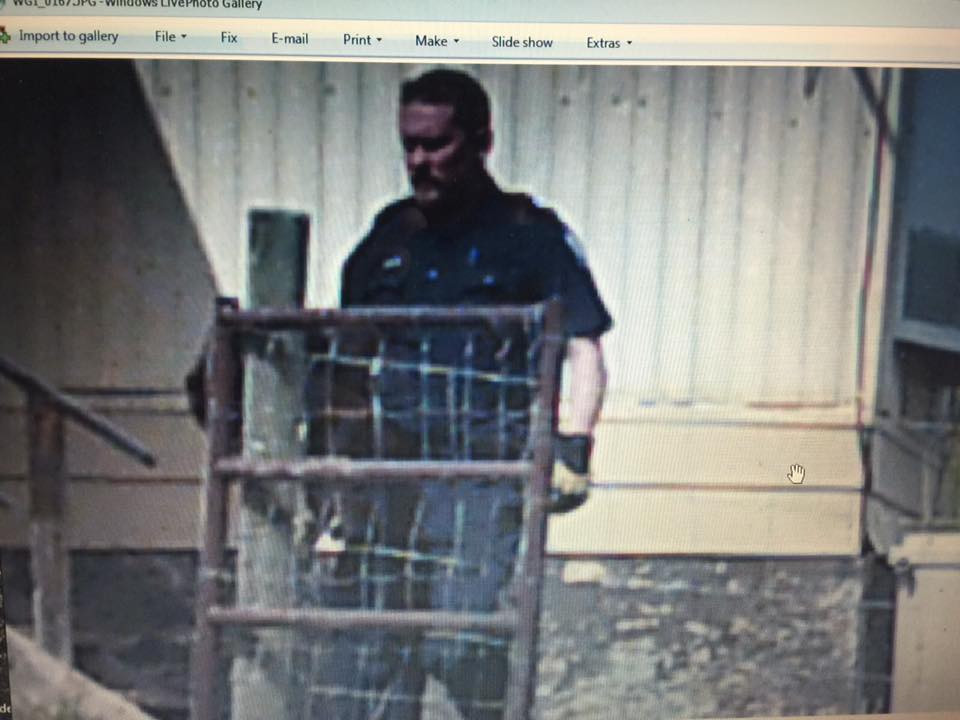On Friday, May 6, 2017 Tiana Jackson was driving from her home to Dawson Creek, 50 km away. Three kilometres from her home she noticed a tiny bear cub at the side of the road. After a call to the RCMP she was in contact with Conservation Officer Micah Kneller. The event that followed have left her and her family members traumatized.
Somewhat frustrated with media reports that made it appear that she had contributed to the killing of the cub by “habituating” him, Tiana recounted the events in a Facebook post:
As I drove up closer to the cub he got up and walked into the ditch then turned and sat down and just watched me. I looked for a sow and didn’t see one. I remained in my car for 10 -15 minutes to see if the Sow would appear. She didn’t.
I then phoned the rcmp and was connected to a conservation officer. He said he would come out right away.
In the meantime the cub began to wander thru a field towards some trees. The CO was about two hours away and I was worried we wouldn’t be able to find him. He was in need of assistance. He seemed a little thin and weak. Very lost and very alone.
After about a half an hour we [Tiana’s brother and wife] were able to lay a blanket over the cub and carry him out. He was very upset and vocal about this. We hoped his cries would bring the Sow out. Still no momma bear.
We drove the cub to my house where he was put in a ten foot by ten foot dog kennel. We gave him food and water. The cub drank water and ate grass. He tried to charge me when I offered him dog food. It was adorable actually. Within a few minutes he seemed relaxed and relieved. He rolled around in the grass and had a butterfly flying around his head that he watched intently.
The CO phoned me and asked what was happening… I told him I just captured the bear to get it away from the road and to safety until help arrived. He said that it would have to be put down anyway. I begged him over the phone to not do it. He said it was the most humane thing to do. He hadn’t even seen the cub yet
I phoned my fiancé, Tyler Olson immediately and informed him of what I was told. He hung up and phoned everyone he could think of. He phoned the bc spca and they told him to contact a bear rehabilitation centre in Smithers. They said they would be more than happy to take the cub as they already had two others the same age from this area. She just needed the ok from the CO. She had volunteers in Dawson creek ready to pick up the cub and transport it.
The CO arrived at my place and I took him to see the cub and told him we had found a rehab ready to take him. He refused. He said bears can’t be rehabilitated. I sat in front of the kennel crying and begging him to let us drive it to the rehab. I was given excuse after excuse that this baby had to die. I remained in front of the kennel while he went to get a lethal injection. We were all pleading for the bear’s life because it had another option. He still refused. I phoned Tyler and gave the phone to the CO and had Tyler try to reason with him. Tyler got his supervisors name and tried to phone him and while he was trying to contact his supervisor, the CO continued to address me.
He told me I had no rights and had to move from the kennel. He went in, grabbed the growling and screaming cub and gave it the shot. He picked it up while it was still growling and gasping for air and threw it in a crate in the box of his truck and drove away without a word. This was an absolutely horrifying experience that will break my heart and the hearts of my family who witnessed this tragedy for a long time.
I phoned the rehab right after to inform her the bear was killed. I was also told the CO ignored the rehabs calls before he arrived at my place and the CO had told his supervisor the bear was unresponsive and had to be killed. That is clearly not true.
I spoke with Tiana on May 27 to see how she was coping, and to find out if she had learned anything more or had any insights that she would like to share.
Q: What did you expect the Conservation Officer Micah Kneller to do when you called him?
A: I thought he would thank me. (She laughed bitterly). I thought he would wrap the cub in a blanket, like we had done, and place him in a kennel to take him to a rehabilitation centre. I thought his job was to save animals.

Q: Was the injection that the CO gave to the bear a tranquilizer, or a lethal injection?
A: Whatever the injection was, it hurt the bear. He was growling and gasping and making terrible noises while the CO carried him, with his arm extended, out to his truck.
While the CO was reaching into the cage to give the cub the injection we were all pleading with him to take him to the rehab. The CO would only say “It’s over now. It’s all over.” He threw the cub a crate in the back of his truck and sped out of my gravel driveway, throwing rocks, and almost ran my neighbour off the road.

Q: The cub looked very young. How much did he weigh?
A: The size of a house cat, about six pounds.
Q: You have been under attack online for feeding the cub, as if that was the justification for killing him.
A: The only reason we captured the cub was because he was wandering into a swamp and was not strong enough to fight the mud. I caught him to save him from drowning and put him in a dog kennel. Not a building. I offered him one piece of dog food that he didn’t eat. He only ate grass and drank water. So technically I never fed him and only contained him til “help” arrived. He was my no means conditioned or habituated.
Q: How have you been coping since?
A: Not good. I have to take a sleep aid every night. I have nightmares and wake up in a panic. I’ve lost ten pounds. I have depression. If I had it to do over again I would do everything differently. I would rather sit in a jail than go through what I’m going through right now.
John Beecham, a consultant and bear biologist retired from the Idaho Department of Fish and Game recently told the Vancouver Sun, “I don’t know of any jurisdiction that takes such a cavalier attitude about killing conflict bears as B.C., and none that routinely kill cubs of conflict bears.”
Soon-to-be published research by Beecham found no evidence that captive-reared black bears from mothers with a known history of conflict behaviour were more prone to become involved in conflict than bears from mothers with no known history of conflict.
His study also found that only about six per cent of captive-reared black bears in seven jurisdictions in the U.S. and Ontario became involved in conflict situations. Hunting regulations are one of the main factors in determining cub survival. First-year survival rates post-release ranged from 50 to 90 per cent.
By Kelly Carson, June 2, 2016


Recent Comments